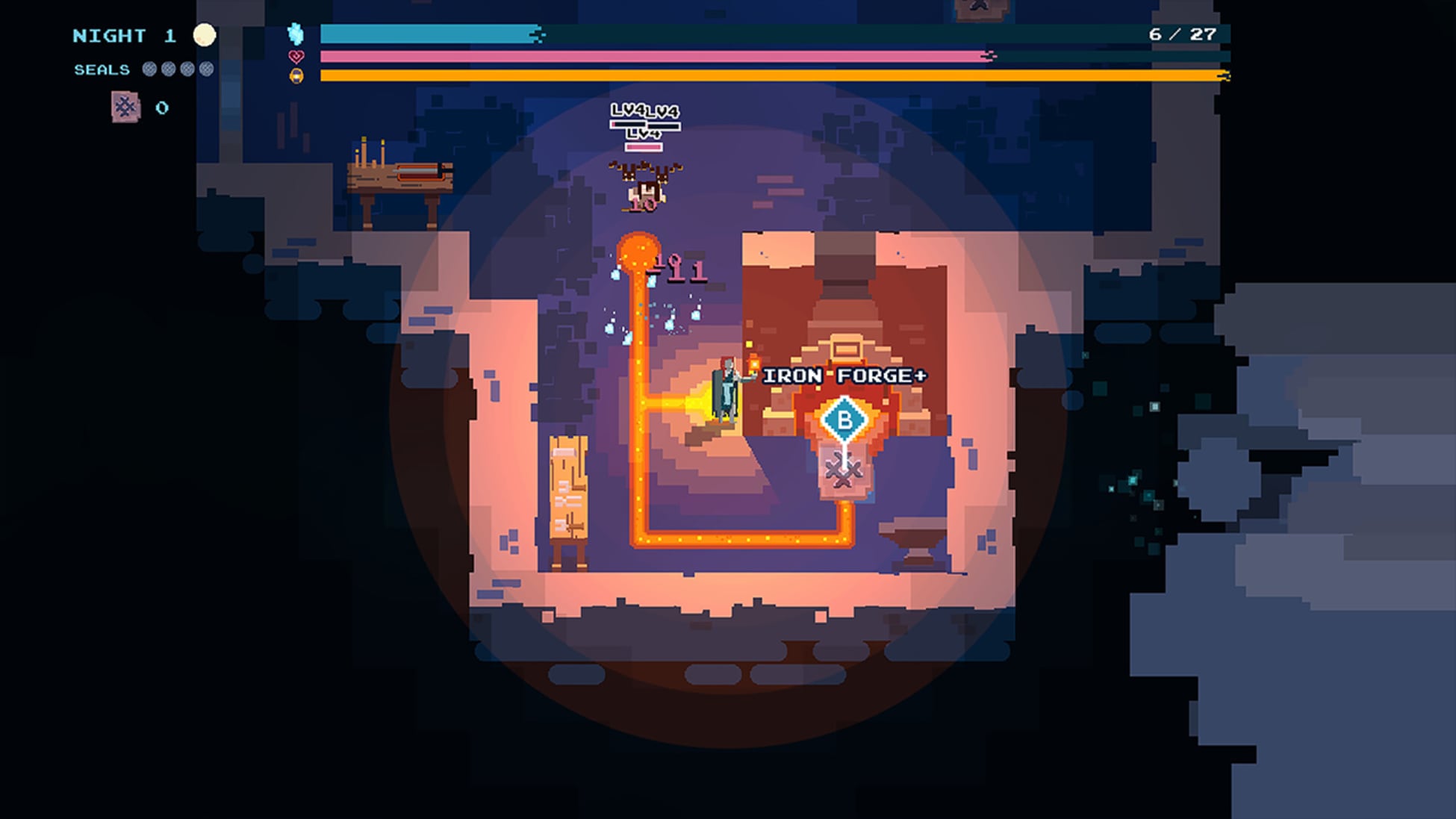Into the Restless Ruins has emerged as a unique roguelike on Nintendo Switch, delivering a deck-based, strategic dungeon building experience that stands out among the indie crowd.
Developed for the eShop with an emphasis on combining traditional dungeon crawling with innovative deck mechanics, this title invites players to architect their own labyrinthine maps—each decision influencing both exploration and survival.
Visually, Into the Restless Ruins embraces a retro, pixel-art style.
While the crowded market of pixelated indie games means this aesthetic is far from novel, it effectively complements the game’s haunting, mysterious atmosphere.
Audio design plays its part as well—the background music, though subtle and understated, provides an ambient backdrop that suits extended gameplay sessions.
While neither the visual nor audio elements are groundbreaking, both serve the purpose and maintain player immersion. Control-wise, the game utilizes intuitive joystick and button layouts, allowing players to seamlessly select, rotate, and place new map areas.
Moving through menus and customizing the dungeon happens smoothly, making for a comfortable pace and reducing barriers to creative gameplay.
These thoughtfully implemented controls enable players to focus on their strategic decisions without unnecessary interface friction. Central to the narrative and gameplay is a storyline rooted in Scottish folklore.
Players take on the role of an explorer summoned by the enigmatic Harvest Maiden to rebuild forgotten ruins and harvest Glilmour, aided by a deck of cards that determines the rooms, hallways, and features they can add daily.
Each card play uses up precious build points, necessitating careful selection and placement.
As players construct their maps, they must also work around pre-existing rooms shrouded in fog, aligning passageways for future exploration. Once a dungeon layout is set for the night, the player navigates the ruins with limited illumination—a torch whose light gradually fades, adding urgency to each run.
If the torch extinguishes, health begins to dwindle, emphasizing the importance of resource room placement, such as those that can recharge the torch.
The map visibility is limited to the area around the torch, so charting a clear path before descending becomes its own challenge. Survival adds another layer of tension: each nightly expedition adds to a visible skull count.
Filling the skull counter leads to inevitable defeat, but the game offers intermittent opportunities—cards that reduce this tally—to prolong your adventure.
The game also tracks health and torch life via persistent status bars, crucial for tactical planning during the maze-like runs. Additional mechanics, such as collecting relics for the Hen Wife and utilizing buffs and stat upgrades, provide strategic depth and replay value.
Building the ruins is snappy and engaging, and the focus on deck-based progression ensures that no two dungeon runs are identical.
In both handheld and docked modes on Nintendo Switch, Into the Restless Ruins maintains solid performance, offering accessible complexity without overwhelming players.
While some may yearn for more refined visuals, the deliberate retro design aligns with its moody themes and lore-driven gameplay. In summary, Into the Restless Ruins delivers an enriching and distinct experience for fans of roguelikes and strategy games on Nintendo Switch.
Although not a visual powerhouse, its compelling dungeon building, smooth controls, and folklore-inspired story make it a valuable addition to the eShop and the broader Nintendo indie library.
Developed for the eShop with an emphasis on combining traditional dungeon crawling with innovative deck mechanics, this title invites players to architect their own labyrinthine maps—each decision influencing both exploration and survival.
Visually, Into the Restless Ruins embraces a retro, pixel-art style.
While the crowded market of pixelated indie games means this aesthetic is far from novel, it effectively complements the game’s haunting, mysterious atmosphere.
Audio design plays its part as well—the background music, though subtle and understated, provides an ambient backdrop that suits extended gameplay sessions.
While neither the visual nor audio elements are groundbreaking, both serve the purpose and maintain player immersion. Control-wise, the game utilizes intuitive joystick and button layouts, allowing players to seamlessly select, rotate, and place new map areas.
Moving through menus and customizing the dungeon happens smoothly, making for a comfortable pace and reducing barriers to creative gameplay.
These thoughtfully implemented controls enable players to focus on their strategic decisions without unnecessary interface friction. Central to the narrative and gameplay is a storyline rooted in Scottish folklore.
Players take on the role of an explorer summoned by the enigmatic Harvest Maiden to rebuild forgotten ruins and harvest Glilmour, aided by a deck of cards that determines the rooms, hallways, and features they can add daily.
Each card play uses up precious build points, necessitating careful selection and placement.
As players construct their maps, they must also work around pre-existing rooms shrouded in fog, aligning passageways for future exploration. Once a dungeon layout is set for the night, the player navigates the ruins with limited illumination—a torch whose light gradually fades, adding urgency to each run.
If the torch extinguishes, health begins to dwindle, emphasizing the importance of resource room placement, such as those that can recharge the torch.
The map visibility is limited to the area around the torch, so charting a clear path before descending becomes its own challenge. Survival adds another layer of tension: each nightly expedition adds to a visible skull count.
Filling the skull counter leads to inevitable defeat, but the game offers intermittent opportunities—cards that reduce this tally—to prolong your adventure.
The game also tracks health and torch life via persistent status bars, crucial for tactical planning during the maze-like runs. Additional mechanics, such as collecting relics for the Hen Wife and utilizing buffs and stat upgrades, provide strategic depth and replay value.
Building the ruins is snappy and engaging, and the focus on deck-based progression ensures that no two dungeon runs are identical.
In both handheld and docked modes on Nintendo Switch, Into the Restless Ruins maintains solid performance, offering accessible complexity without overwhelming players.
While some may yearn for more refined visuals, the deliberate retro design aligns with its moody themes and lore-driven gameplay. In summary, Into the Restless Ruins delivers an enriching and distinct experience for fans of roguelikes and strategy games on Nintendo Switch.
Although not a visual powerhouse, its compelling dungeon building, smooth controls, and folklore-inspired story make it a valuable addition to the eShop and the broader Nintendo indie library.





